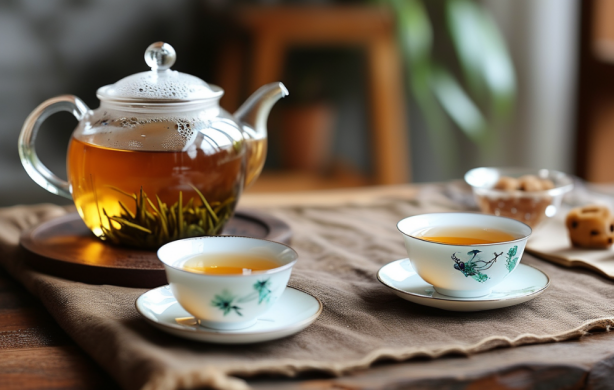千年传奇中国茶 万里飘香世界家

Tea is thought to have started in China and was first written about in Shennong’s Classic of Materia Medica during the Qin and Han dynasties (221 BC-220 AD). Early Chinese people used tea leaves for medicine, then added them to soups or greens, and later drank them as a beverage.
Old books, including Shennong’s Classic of Materia Medica, talked about tea’s health benefits like helping digestion, improving brain and urinary (泌尿的) function, and reducing fatigue. These medical uses of Chinese tea are also known worldwide. For example, Myoan Eisai, a Japanese Buddhist priest from 1141 to 1215, praised tea as a medicine in his book How to Stay Healthy by Drinking Tea. In 2002, Time magazine named China’s green tea one of the top 10 “super healthy” foods.
The Classic of Tea, written by Lu Yu in the Tang Dynasty (618-907), is the first detailed guide on tea and its practices in China, marking the start of Chinese tea culture.
Since the Tang and Song dynasties (960-1279), tea has become very popular, especially among poets like Bai Juyi, Su Shi, Lu You, and Huang Tingjian, who all wrote poems about tea.
For a long time, Chinese people have been growing, picking, making, and drinking tea. Traditional tea processing techniques are mainly found in four major regions in China: north and south of the Yangtze River, southwest China, and south China. There are six main types of tea: green, yellow, dark, white, oolong, and black teas. With reprocessed teas like flower-scented teas, there are over 2,000 varieties in China.
However, social practices related to tea are spread throughout the country and shared by many ethnic groups. As a common saying goes, “firewood, rice, oil, salt, sauce, vinegar, and tea” are the seven daily necessities for every household. In China, drinking tea is an important part of communication and reflects values like modesty, harmony, courtesy (谦恭), and respect.
Tea has also been a way to build peace, friendship, and cooperation between China and the world for many centuries, dating back to when it was a key commodity on the ancient Silk Road and the Tea Horse Road.
原创编写 版权所有 侵权必究! 每日更新 个性化阅读 英语飙升!